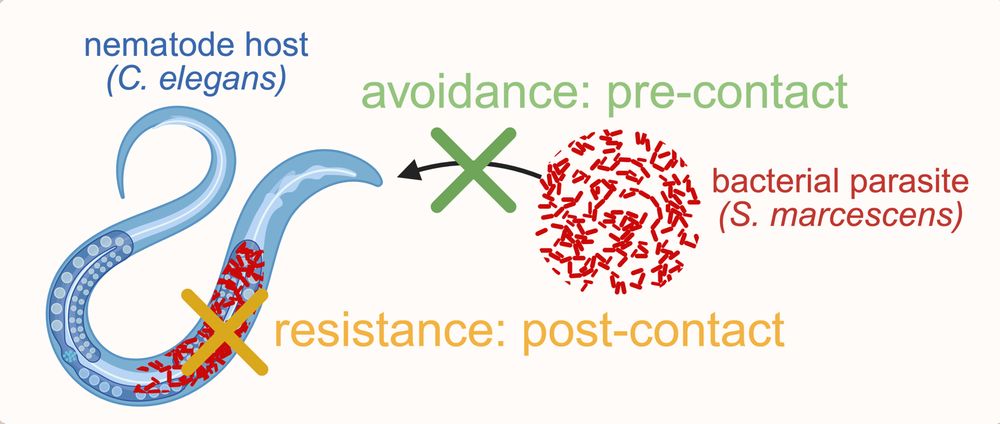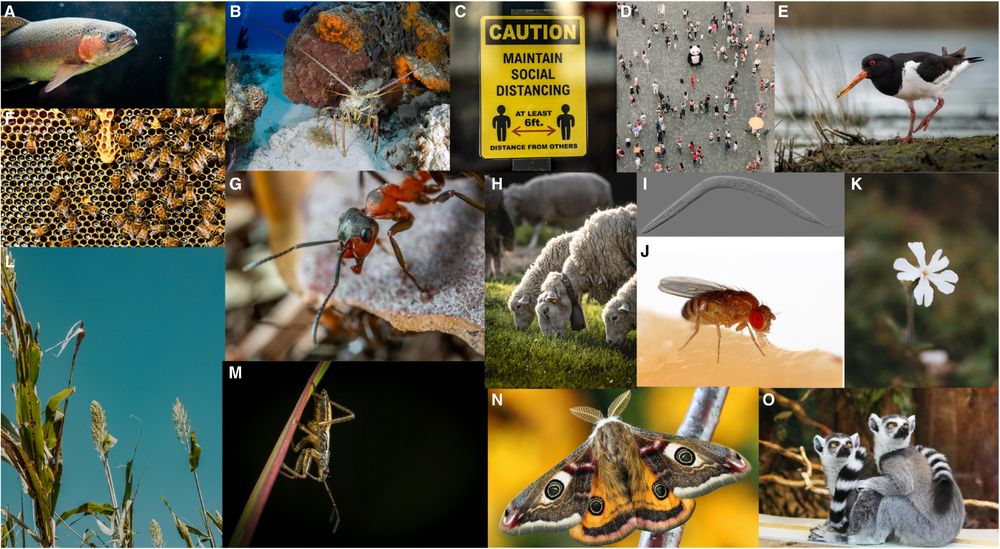
🚨 New Research: Host avoidance and resistance vary independently and are specific to parasite genotype ➡️ buff.ly/SdYvSsd
"Hosts may defend themselves against parasites by avoiding contact or by mounting a resistance defense after contact. This study shows that..." 🦠
29.07.2025 12:02 — 👍 1 🔁 1 💬 0 📌 0
Our new paper "Host avoidance and resistance vary independently and are specific to parasite genotype" is out in Journal of Animal Ecology! @animalecology.bsky.social @akgibson.bsky.social
besjournals.onlinelibrary.wiley.com/doi/10.1111/...
28.07.2025 14:34 — 👍 3 🔁 2 💬 0 📌 0
📅Let's meet on Dec 4 & 5 to ̶d̶i̶s̶g̶u̶s̶t̶ discuss about Disgust accross borders, a theme that's anything but tasteless !
👃 As you'll see very soon, the program is still appetizing.
⬇️Interested in presenting? Subdmissions are now open!⬇️
@cmolho.bsky.social @csarabian.bsky.social @atognetti.bsky.social
02.07.2025 14:00 — 👍 6 🔁 6 💬 0 📌 0
Hope this primer proves helpful to anybody interested in infection avoidance. It was certainly a pleasure to write with @akgibson.bsky.social and @pfvale.bsky.social l!
21.05.2025 13:48 — 👍 5 🔁 4 💬 1 📌 0

This figure highlights the diversity of avoidance across different species in response to pathogens and parasites. (A) Rainbow trout avoid waters with high concentrations of trematode cercariae, reducing exposure to these parasites. (B) Healthy Caribbean spiny lobsters avoid sharing dens with those infected by viruses, preventing the spread of infection within their communities. (C,D) Avoidance underlies many human public health measures such as social distancing, to minimize the risk of infectious disease contagion. (E) Oystercatchers avoid eating the largest cockles, which are likely to be infested with parasitic helminths. (F,G) Bees and ants (eusocial insects) exhibit complex social behaviours to minimize infection risks. Bees isolate or remove infected individuals from the colony, while ants restructure their social networks to reduce contact with fungal-infected foragers. (H) Sheep avoid food and water sources contaminated with feces, reducing the risk of ingesting parasites that may be present in such environments. (I,J) Caenorhabditis elegans and Drosophila melanogaster. These model organisms illustrate how detected pathogenic cues can modify behaviour and provide insights into the neurological integration of sensory perception and behavioural response to pathogens. Plants, like Saline latifolia (K), can avoid infection too, for example by flowering for shorter periods to reduce contact with fungal spores transmitted by pollinators. Root compounds of some sorghum (L) lines are associated with reduced germination of parasitic Striga seeds, demonstrating chemical avoidance strategies. (M) Crickets avoid detection by parasitic flies through the selection of variants that cannot sing, disrupting the ability of parasites to locate hosts acoustically. (N) Spongy moths show variability in larval behaviour to avoid virus-contaminated foliage. (O) Lemurs avoid water sources that have an elevated risk of fecal contamination.
This primer on infection avoidance was incredibly fun to write with @cr-amo.bsky.social and Mandy Gibson. We cover its taxonomic breadth, mechanisms and evolution, and its importance across fields as diverse as public health, conservation, and agriculture. 🧪
www.cell.com/current-biol...
#SymbioSky
20.05.2025 09:18 — 👍 11 🔁 8 💬 2 📌 0

